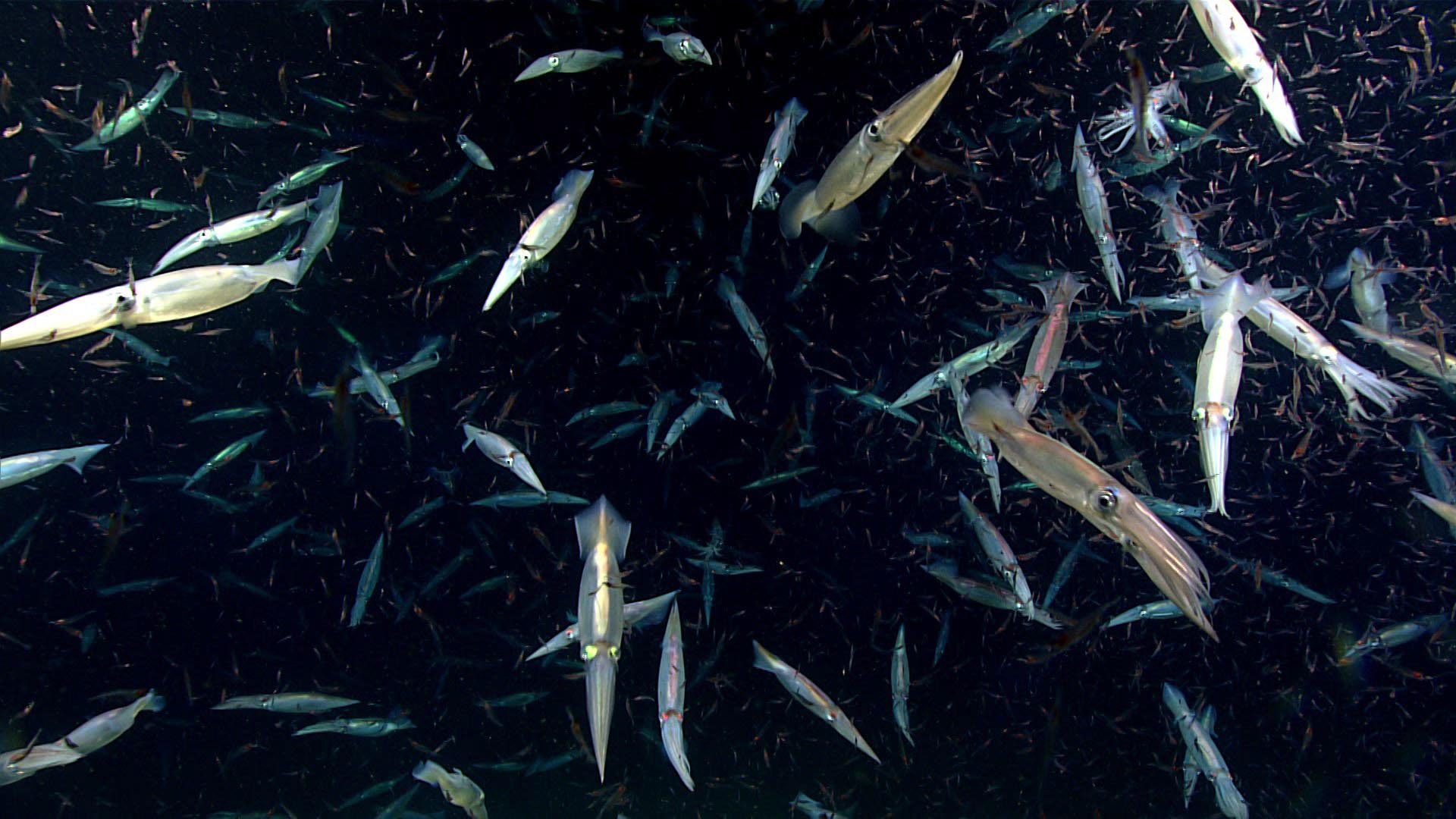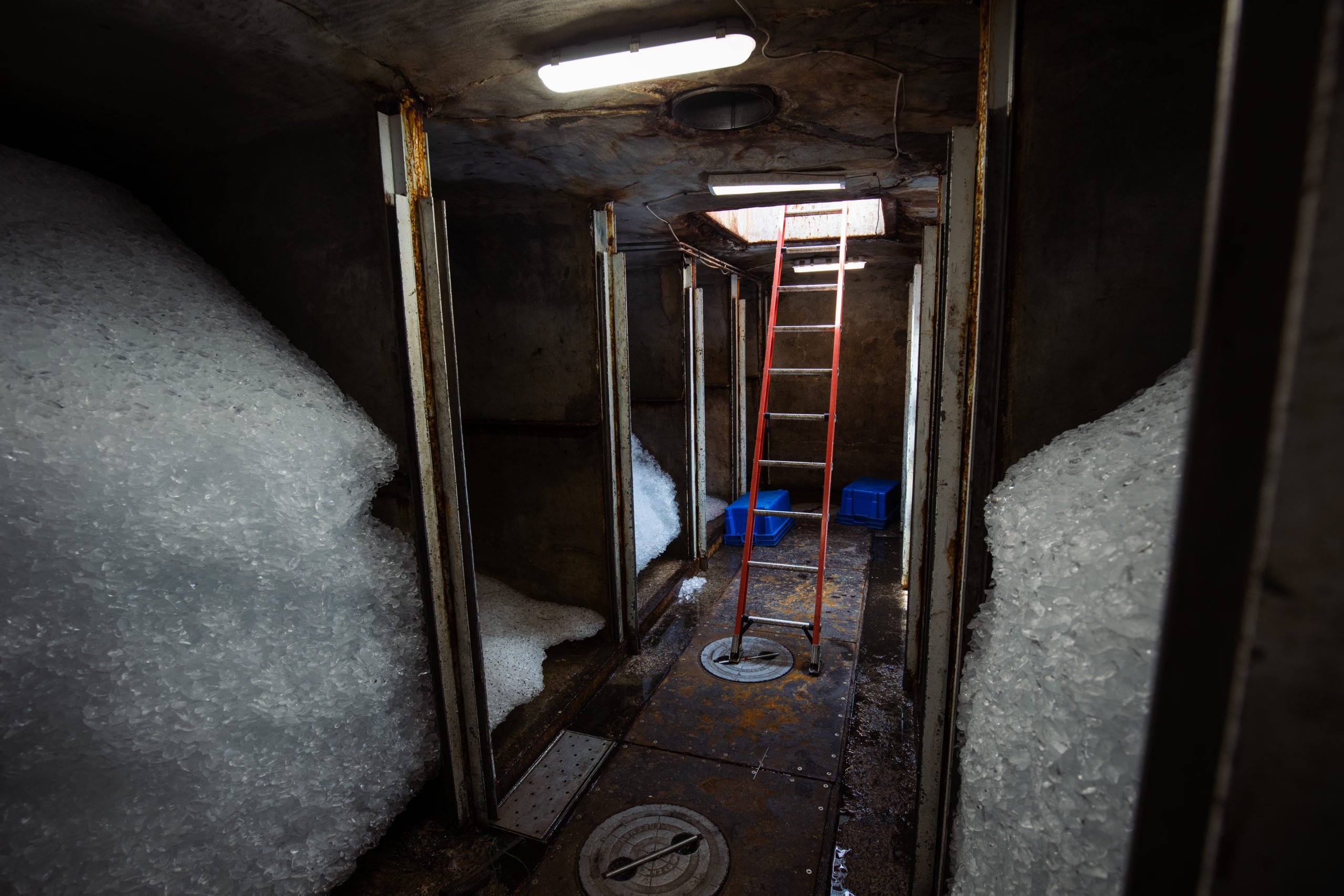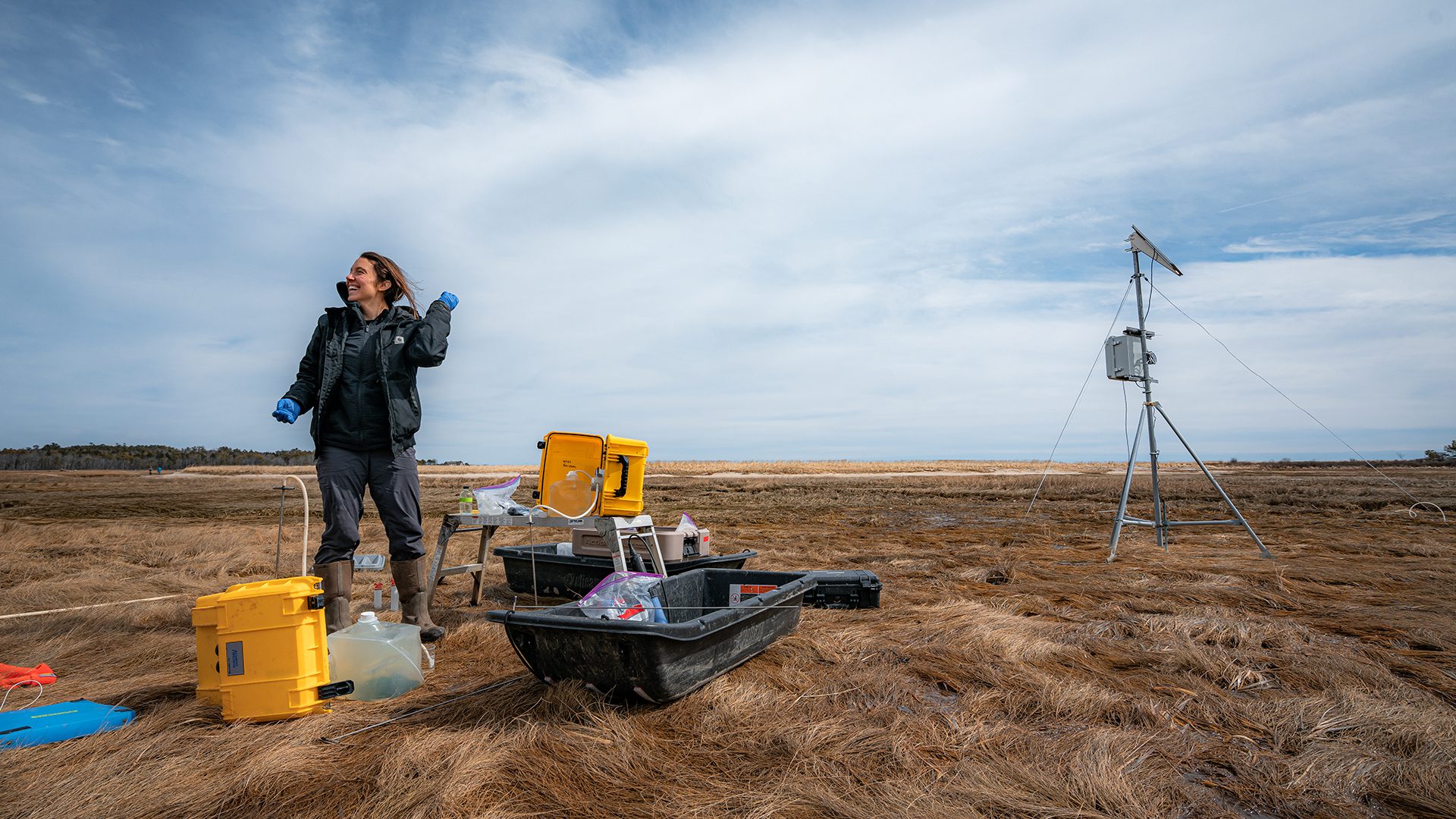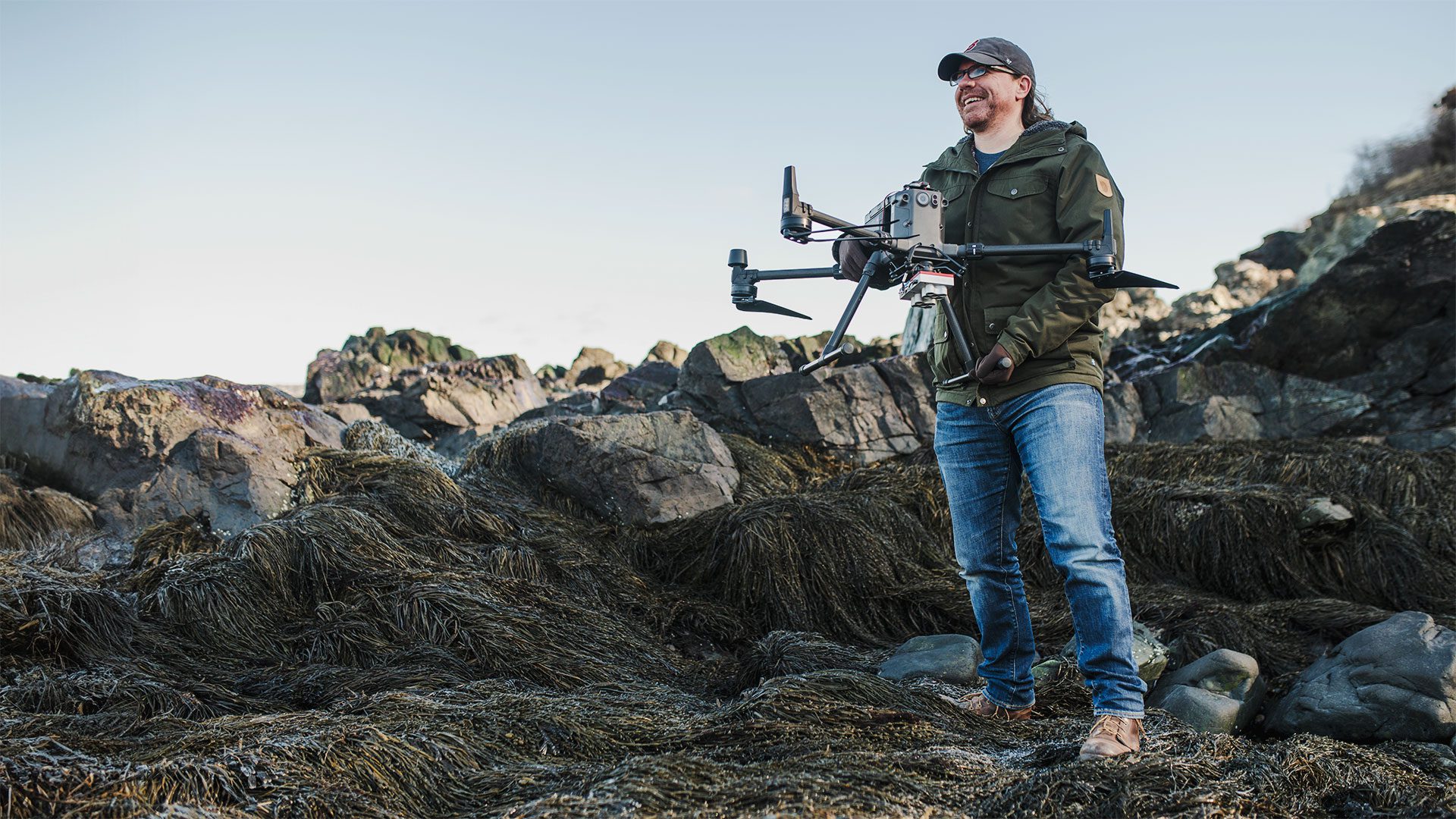
Squid Games
Shortfin squid are becoming more available to New England fishermen, but why?
Estimated reading time: 5 minutes
 This article printed in Oceanus Winter 2022
This article printed in Oceanus Winter 2022
Record landings of a lucrative and elusive species of squid are bringing needed stimulus to the New England fishing economy, following an anomalous shift in their availability during the last five years. Scientists are investigating the cause behind this change in the hopes of informing sustainable management of the animal.
The Northern Shortfin Squid, or Illex, has a broad range, persisting from Florida all the way up to Labrador, Canada. Historically, its populations were most productive offshore from the Mid-Atlantic states, where the species is managed by the regional fisheries management council. By 2017, however, schools of the crimson cephalopod mysteriously became more available for permitted New England fishermen to catch without the expensive freezers necessary to transport them long distances. Nearly every year since then, the fleet has obtained its annual quota a full month ahead of schedule—something that's caught the attention of scientists.
“There were never really two big years in a row with Illex before and there have been three or four since 2017,” says WHOI physical oceanographer Glen Gawarkiewicz.
In 2021, Gawarkiewicz joined a team of 15 interdisciplinary scientists from NOAA Fisheries and UMass Dartmouth’s School for Marine Science and Technology, along with industry representatives (together known as the Squid Squad) to investigate the oceanographic conditions that may be driving the animal’s distribution.
Unlike other Atlantic squid species, Illex is known to migrate onto continental shelf waters in waves, sometimes swarming and devouring the bait cast out by nearby fishing vessels. Yet, within days they mysteriously vanish. Gawarkiewicz refers to this there-and-gone rhythm as a “pulse-like behavior.”
“There must be a process that puts them all on the outer shelf and then takes them all off, and that’s what we’re working toward,” says Gawarkiewicz. “We’ve got some clues, but we’ve got a lot more quantifying to do.”
One of those clues may be the stark uptick in ocean temperatures. As the Gulf Stream continues to warm, it produces swirling currents of water that hurdle into New England fishing grounds. In the past two decades, the number of these eddies—known as warm core rings— has nearly doubled in the Northwest Atlantic. Gawarkiewicz theorizes that Illex may use these rings to shuttle themselves to nutrient-rich waters at the edge of the continental shelf. The more warm core rings there are near New England, Gawarkiewicz hypothesizes, the more transportation opportunities there could be for Illex.
To know for sure though, he and his team will need accurate estimates of exactly how many Illex are out there—information that’s evaded experts for decades.
“We know that Illex get caught in the Gulf Stream and warm core rings, but we just don’t know how many juveniles come into the fishing area that way,” says NOAA Fisheries’ squid scientist, Lisa Hendrickson, who’s been the country’s leading Illex expert for more than 30 years. To fish the squid sustainably, she says, you would need to know the stock status every year.
Currently, there are only two scientific surveys conducted by the Northeast Fisheries Science Center that estimate Illex numbers, but neither occurs during the late May to August-September fishing season. Without knowing how squid populations might be affected by the season's catch, it will be hard for the Squid Squad to assess the industry’s impact on Illex and inform a lasting, sustainable fishery. For Gawarkiewicz, the challenge may present another opportunity to collaborate with fishermen.
“We desperately need [observatories] both to learn more about how the ocean works and to manage resources like Illex more effectively,” he says. “A big part of this is that the industry is sharing more data and I think has more trust in science.”
For now, the Illex boom seems to be supplementing income lost by ailing New England fisheries.

Rows of 8-foot-high pens replete with ice cubes are being topped off inside the hull of F/V Lightning Bay at the Town Dock in Narragansett, a sign that Illex are close enough to catch without freezers. (Daniel Hentz, © Woods Hole Oceanographic Institution)
“Illex is hugely important to the economy,” adds Phil Ruhle Jr., former Illex fisherman and current operations manager at Seafreeze Shoreside in Narragansett, where the squid is processed. “You’re running out of things to catch, so you need a bunch of different species to make a year.”
Since the spike in the region’s Illex landings, permitted fishing vessels have seen a near doubling of profits—with some reporting over $1 million in the May-to-August season. What’s more, the boom comes at an auspicious time. While Illex has traditionally been sold as bait for long-liners who fish for species like swordfish, wholesalers are beginning to promote Illex as another squid that can be used for calamari as global demand rises.
As fuel costs and inflation continue to rise, those qualified to catch Illex have pushed for increased quotas of the squid. This summer, the Mid-Atlantic Fisheries Management Council is expected to oblige that request, pushing the allowable catch from 33,000 tons to just over 44,000.
“We catch the quota in August and we’re sitting around while the squid are abundant and they’re gonna die, so it’s kinda silly,” says Ruhle Jr. “We’re leaving millions and millions of dollars on the table and we need it, the fishermen need it.”
Over time, the industry’s shift has made the Squid Squad’s work a greater priority. The team ultimately hopes to provide information that will help the industry capitalize on the squid, but also ensure management officials consider the population’s long-term survival. Whether this boom will continue to last, however, is the subject of some angst among both industry and science experts.
So far this year, the NOAA Fisheries Science Center is reporting a slow start to the 2022 season with only 318 metric tons caught (12,007 metric tons less than this time last year). For Hendrickson, this serves as a caution that the boom, while longer than any in prior history, isn't a guarantee for the future.
“Northern shortfin squid are a boom-bust species—you could have a big year one year and the next year have nothing,” says Hendrickson, citing other Illex booms in 1998 and 2004. That said, what’s going on now is an anomaly, she adds.
Remaining vigilant, Gawarkiewicz still continues to apply for NASA grants that would extend the satellite and environmental surveys conducted by his team.
“We want to keep our group going to facilitate the interaction between industry and academia,” says Gawarkiewicz. “Working with the Squid Squad and the Illex industry has added a lot more urgency to my research.”



